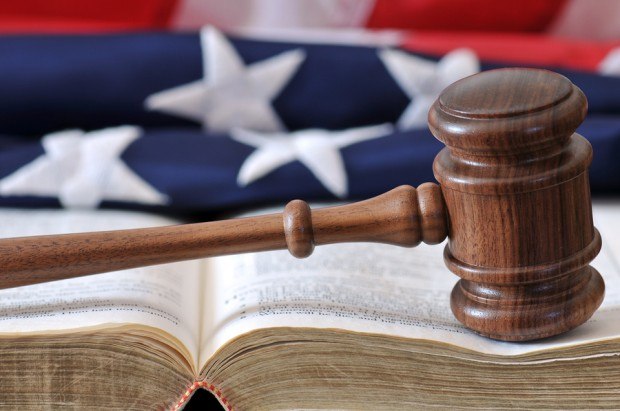The U.S. Department of Justice appeared to have struck gold last week with the law it wielded against one of the nation’s largest banks over conduct that fueled the financial crisis.
To convince a jury that Bank of America engaged in fraud, lawyers in the Manhattan U.S. Attorney’s Office turned to FIRREA, a once-dormant civil fraud statute that essentially allows the government to build a criminal case against financial institutions, but without having to prove it beyond a reasonable doubt.
The Justice Department has tried to use the law in an array of bank cases, especially those tied to the housing bubble and subsequent collapse, after similar criminal investigations did not produce charges.
But Wednesday’s verdict, which faulted the bank for making bad home loans and passing them to Fannie Mae and Freddie Mac, was the first test of FIRREA that went all the way through trial. The use of the law could transform the Justice Department’s relationship with Wall Street.
“It allows and permits the government to go after all kinds of malfeasance that some people thought that maybe you couldn’t go after before,” U.S. Attorney Preet Bharara, whose office brought the case against Bank of America, said in an interview on Thursday.
FIRREA, the Financial Institutions Reform, Recovery and Enforcement Act, was passed in 1989 in response to the savings-and-loan crisis but had largely collected dust until Bharara’s office resurrected it in 2010.
The Justice Department is now invoking FIRREA in nearly every case it is bringing against financial institutions, from securities fraud to shoddy lending practices to money laundering.
It has used the statute to accuse Standard & Poor’s of fraud in rating mortgage bonds, for example, and to go after First Bank of Delaware for allegedly processing withdrawals on behalf of fraudulent merchants.
TAPPING GRAND JURY MATERIAL
The law, which allows the Justice Department to sue over fraud affecting a federally insured financial institution, gives civil lawyers the ability to tap grand jury material and subpoena documents they would not otherwise be able to get.
It also has a 10-year statute of limitations, longer than the typical five years for fraud cases, potentially giving lawyers in Bharara’s office and other arms of the Justice Department more time to investigate the 2007-2008 financial crisis.
The pattern bears a striking resemblance to what Bharara’s predecessor Rudy Giuliani did in the 1980s. After facing problems in trying to prosecute the Teamsters over their mob connections, Giuliani turned to the civil RICO law, which allowed him to successfully go after the whole institution.
“It’s a permanent change in the mindset,” said Brian Feldman, who worked in Bharara’s civil frauds unit, referring to the way prosecutors will now consider FIRREA in deciding how to investigate and charge bank cases after seeing the Bank of America verdict.
While bank misconduct might have previously only faced either a criminal case or no case at all, FIRREA offers a new middle ground.
“This is the genie that is never going back in the bottle,” said Feldman, who helped build some FIRREA cases and is now in private practice at the law firm Harter Secrest & Emery.
In the Bank of America case, a federal jury on Wednesday found it liable under FIRREA for a fraud the government said its Countrywide unit orchestrated, originating shoddy home loans in a process called “Hustle” that were then sold to Fannie Mae and Freddie Mac.
The jury also found a former Countrywide executive, Rebecca Mairone, liable for fraud.
CIVIL FRAUDS UNIT
The recent use of FIRREA began taking hold in a new unit Bharara created in 2010 to look at civil fraud cases.
The unit has brought several cases using FIRREA and another law, the False Claims Act, over reckless mortgage lending, scoring some settlements along the way. In February 2012, Citigroup Inc agreed to pay $158.3 million to settle claims it defrauded the government into insuring faulty mortgages.
But its use of FIRREA was called into question when three banks facing cases under the law – Bank of America, Wells Fargo & Co and Bank of New York Mellon Corp – decided to fight their cases in court rather than settle.
Through the litigation, Bharara’s office fought to have courts endorse a broad interpretation of the statute that would allow the government to sue a bank for fraud when the bank was itself the financial institution allegedly affected.
Defense lawyers have questioned whether that interpretation was Congress’ intent in passing the law, since the concern in the wake of the savings-and-loan crisis was on curtailing fraud by third parties.
“The thought was, ‘I’m going to get sued for doing an act to myself, that somehow I did a crime and am victim of that crime,'” said Marvin Pickholz, a lawyer at the law firm Duane Morris who specializes in white-collar defense. “It’s a hard concept to accept.”
But U.S. District Judge Jed Rakoff, who oversaw the Bank of America case, endorsed the government’s self-affecting theory, and two other judges in Manhattan federal court reached similar conclusions.
Bank of America has promised to appeal the verdict. While it has not said on what grounds, lawyers in Bharara’s office anticipate Rakoff’s FIRREA ruling could be part of its appeal.
Meanwhile, Bharara warned that similar cases remained in the offing: “The pipeline is not dry,” he said.
Bharara’s office is also investigating JPMorgan Chase & Co.’s compliance with a government mortgage insurance program at the heart of several other cases brought by the civil frauds unit, according to regulatory filings. The bank has not said if that inquiry focuses on FIRREA or other laws.
Representatives for JPMorgan declined to comment, as did a spokeswoman for Bharara’s office.
INSPIRATION
Bharara’s success with the law has inspired other parts of the Justice Department.
Early last year the Obama administration set up a task force to investigate misconduct that fueled the financial crisis, and turned to FIRREA to help build cases.
But while Bharara’s office has largely used the law in cases accusing banks of making bad home loans and defrauding the government into insuring or purchasing them, the task force has used the law in a different way, attesting to just how versatile a law the government sees it to be.
When it separately sued Bank of America in August, it accused the bank under FIRREA of lying to private investors about how risky mortgage securities were that it sold to them, a theory that resembles a securities fraud case.
A lawsuit the Justice Department intended to file last month against JPMorgan Chase relied on a similar theory of FIRREA, people familiar with the matter have said. JPMorgan headed off the lawsuit by entering settlement talks, and is negotiating a $13 billion package to resolve that inquiry and several others.
While the modern use of FIRREA has been focused on the financial crisis, Bharara said the law could allow the government to go after other types of frauds.
A case his office brought against BNY Mellon in 2011 that relied in part on FIRREA focuses on accusations the bank overcharged clients for trading currencies.
“It’s not clear what other bad conduct will be taking place, whether it’s some kind of exotic financial instruments being passed to or through financial institutions through fraud,” Bharara said. “But FIRREA becomes an all-purpose vehicle to get at all of those things going forward.”
The Bank of America case is U.S. ex rel. O’Donnell v. Bank of America Corp et al, U.S. District Court, Southern District of New York, No. 12-01422.
(Reporting by Nate Raymond and Aruna Viswanatha; Editing by Amy Stevens and Maureen Bavdek)




















 Zurich Makes £7.7 Billion Bid for UK Cyber Insurer Beazley
Zurich Makes £7.7 Billion Bid for UK Cyber Insurer Beazley  Behavior Is Dominant Driver of Collision Risk for Commercial Auto
Behavior Is Dominant Driver of Collision Risk for Commercial Auto  Negotiation by Design: Why Writing Beats Talking
Negotiation by Design: Why Writing Beats Talking  Why the Middle Market Matters and How Insurers Can Capture It
Why the Middle Market Matters and How Insurers Can Capture It 




